In Short: Two main options, via Saudi and Egypt (safer, cheaper but longer) or via Iran and Turkey (shorter, busier and geo-politically more unstable). It’s a complicated planning climate at present. Review regularly based on latest risk factors.
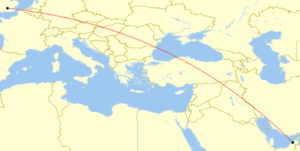 There are more business aviation operators flying between the Middle East and Europe than ever before. So we took the time to look over the route options between the two regions. For our example we will be using a flight from Dubai to London, but similar operational considerations are valid for the plethora of route combinations through this whole region.
There are more business aviation operators flying between the Middle East and Europe than ever before. So we took the time to look over the route options between the two regions. For our example we will be using a flight from Dubai to London, but similar operational considerations are valid for the plethora of route combinations through this whole region.
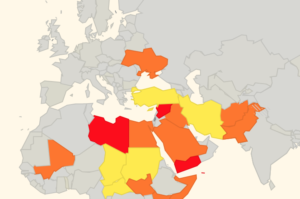 Firstly, we are sure you are a frequent visitor to our safe airspace website. Updated all the time with the latest notes and risk recommendations based on the latest intel. So, first things first, we want to avoid Syria, Libya and the Sinai Peninsula. As you can see however, this is a complicated geo-political region for flight planning. The direct great circle route would take us through Syria and would be around 3125nm. But that isn’t going to work. So, what else we got?
Firstly, we are sure you are a frequent visitor to our safe airspace website. Updated all the time with the latest notes and risk recommendations based on the latest intel. So, first things first, we want to avoid Syria, Libya and the Sinai Peninsula. As you can see however, this is a complicated geo-political region for flight planning. The direct great circle route would take us through Syria and would be around 3125nm. But that isn’t going to work. So, what else we got?
We will look at the two ways to head over the region. One is via Iran, Turkey and onwards to Europe. The other over Saudi Arabia and Egypt towards Europe.
Option 1: Iran/Turkey
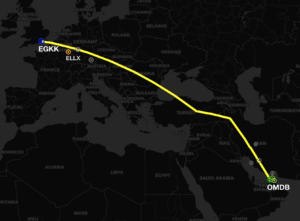 Safety: Both Iran and Turkey are FSB Risk Level: Three – Caution. Iran is involved in the ongoing conflict with Syria and several Russian missiles crossed the Tehran FIR and several busy international routes. There are also increased tensions between the USA and Iran at present – if you had to divert in an N-reg aircraft, Iran would not be the friendliest of places to do so. Turkey borders with Syria and we have received multiple reports of GPS interference in the area.
Safety: Both Iran and Turkey are FSB Risk Level: Three – Caution. Iran is involved in the ongoing conflict with Syria and several Russian missiles crossed the Tehran FIR and several busy international routes. There are also increased tensions between the USA and Iran at present – if you had to divert in an N-reg aircraft, Iran would not be the friendliest of places to do so. Turkey borders with Syria and we have received multiple reports of GPS interference in the area.
Distance: an extra 100nm.
Time: About 15 minutes longer than great circle route.
Ease and Cost: Iran has higher overflight costs and for US based operators a reminder of the sanctions for dealing directly with Iran, or agencies in Iran. You’ll want to use an approved agent if you’re from the US (i.e.–not an Iranian company). Iran doesn’t work on Fridays, so be aware there. Turkish overflight costs are reasonable and remember that Turkish authorities require the use of an agent to apply for permits.
Traffic: The biggest issue with this route is that everyone is using it! It’s congested with a lot of airline traffic. It’s a major corridor for Asia-Europe flights also. So, getting the levels you want, and off route deviations are more complicated. Things get busy, as you can see!
Option 2: Saudi/Egypt
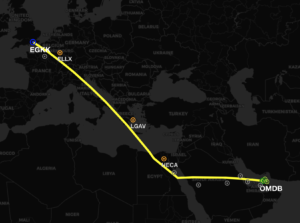 Safety: In terms of airspace warnings and risk, this route is slightly better. We have rated Saudi and Egypt airspace as FSB Risk Level: Two – Assessed Risk. Beyond the Sinai Peninsula and the Saudi/Yemen border, generally there is less of a chance of airspace security risks at present.
Safety: In terms of airspace warnings and risk, this route is slightly better. We have rated Saudi and Egypt airspace as FSB Risk Level: Two – Assessed Risk. Beyond the Sinai Peninsula and the Saudi/Yemen border, generally there is less of a chance of airspace security risks at present.
Distance: An extra 300nm from the great circle.
Time: Around 45 minutes longer.
Ease and Cost: Saudi and Egyptian airspace are generally a cheaper option ($1,000USD+). In Egypt, by law you have to get your permit through an Egyptian agent, but it’s a straight forward process. In Saudi, again, using an agent is best; they normally have three-day lead time – so keep that in mind. Also remember that the CAA only work Sun-Wed during office hours.
Traffic: For most of the day, much less of a traffic bottle neck.
Bottom line
Of the two options, routing via Saudi/Egypt is cheaper, and safer (as long as you steer clear of Egypt’s Sinai Peninsular and Saudi’s border with Yemen), but it’s going to take slightly longer.
What about Iraq?
We don’t think it’s a good idea. There’s a lot of information out there saying certain airways are ok but only at higher levels. But if you needed to get down fast, or even make an unexpected landing, Iraq isn’t the place you would want to go at present. Treat with caution.
Which one is your favourite choice? Let us know!
Further reading:
- US updates its Syria airspace warning
- Don’t overfly the Tripoli FIR, and don’t land at any Libyan airports
- France add Saudi Arabia to their airspace warning list
More on the topic:
- More: GAR Procedure for UK Flights
- More: EASA Removes CZIBs: Middle East Risk Gets Harder to Read
- More: West Africa Ops: Routing Options and Restrictions
- More: London Night Ops: What’s Changing This Summer
- More: Why EASA has Withdrawn Airspace Warnings for Iran and Israel
More reading:
- Latest: More face scans at the US border for BizAv flights
- Latest: Greenland NAT Alternates: Dec 2025 Update
- Latest: Mexico Customs Surprises: Pills, Vapes, and Laptop Rules
- Safe Airspace: Risk Database
- Weekly Ops Bulletin: Subscribe
- Membership plans: Why join OPSGROUP?



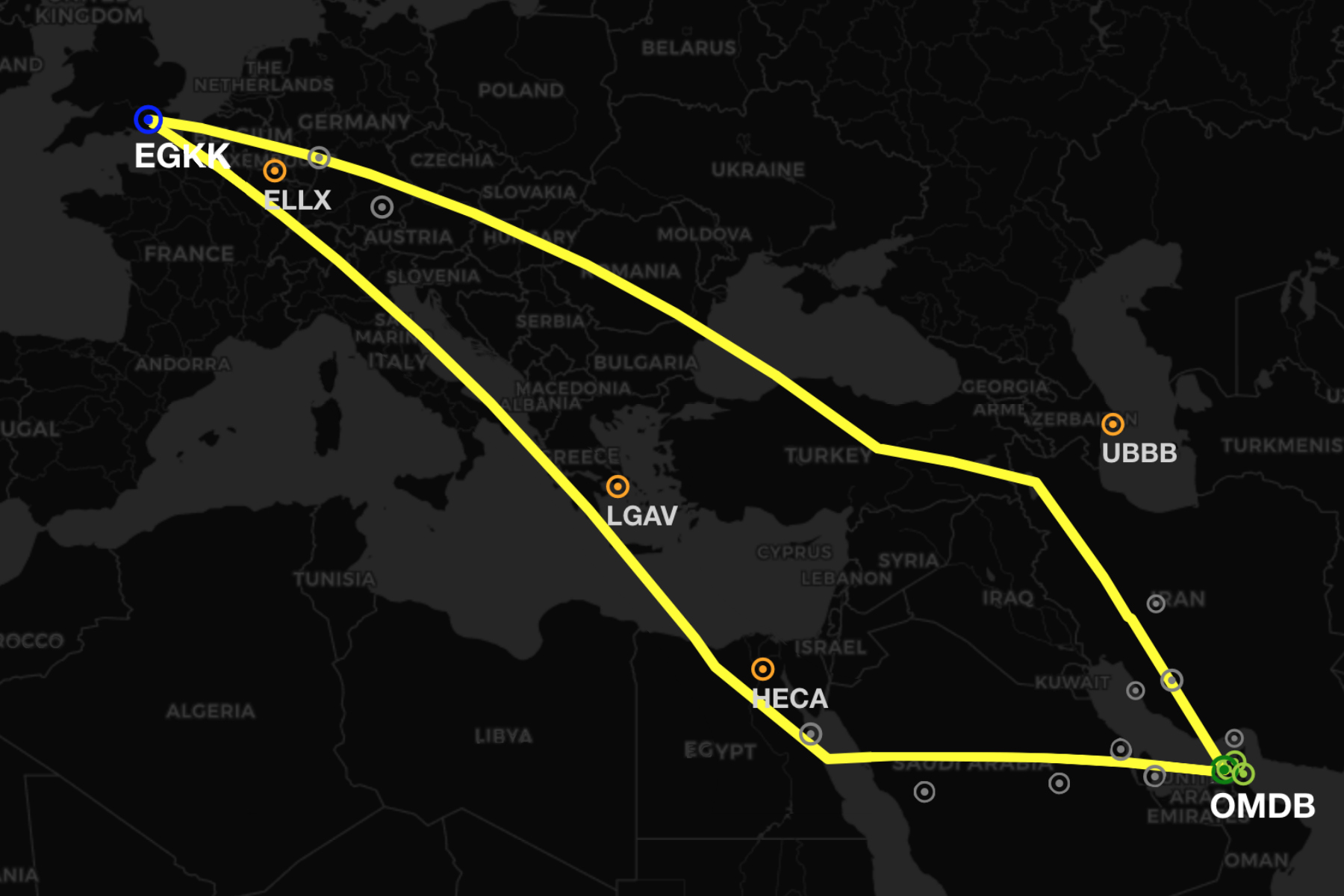
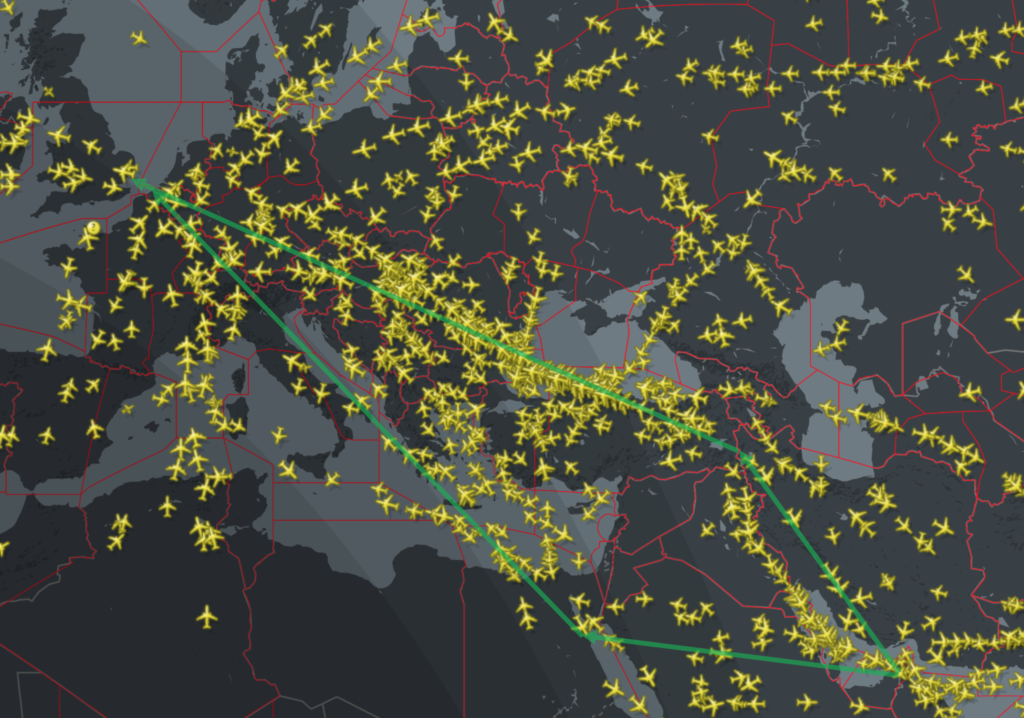







 Get the famous weekly
Get the famous weekly 






Nonsense. I’ve been flying in and over that region for the past 7.5 years. Saudi is bliss, especially at night. Saudi and Egypt have good ATC standards and not so busy airspace. Iraq is coming online again and ATC is good (American controlled) and airways are not yet busy. Iran is very busy but with good ATC. Lovely people on the radio too. (‘good time’ anyone? 😉 But it can be very busy and difficult to get the levels during rush hours. Iran can pose issues with terrain clearance and divertion options. Iraq too but in a lessor way, mostly the north-east. Just don’t go below FL260 if you can. In Saudi terrain is not a real concern except it the south. South of Abha/Gizan I’d avoid it. But my general preference is Saudi especially routing Europe-DXB area. Many directs and reasonably quiet airspace with good and simple ATC. (all with non N reg aircraft/operators)
90 percent of US business jet flights are in North America. Especially in that route US aircraft are a minority. You are welcome to divert in the Saudi desert if you like. I’ll take the Iran route any day.
The first chart in this article should explain US importance in the private jet industry to those of you without a clue:
https://www.forbes.com/sites/niallmccarthy/2017/03/02/the-countries-where-private-jet-ownership-is-soaring-infographic/amp/
I’d certainly never risk a diversion over Iran. Now with Trump things would probably work out, but still not worth the hassle. Plus, paying over flight fees, even though a third party, is probably a violation of the sanctions.
Your state safety assessments are obviously dubious, arbitrary and politically biased. With the chaos Israelis are causing within Palestine, Syria and the mid-east as are Saudi Arabia and the UAE in Yemen, the Egypt route is certainly not a remote 2nd to the Iran route. Remember also that overflights are now a possibility over Iraq which is also cost-effective from a fuel & overflight charges viewpoint. Suggest you stick to the operational perspective in your journalistic adventures.
I don’t agree your safety assessment here. Flying over Egypt and Saudi in my opinion is definitely more risky than Turkey and Iran. I can say that from an alternate point of view as well as pure overflight safety.